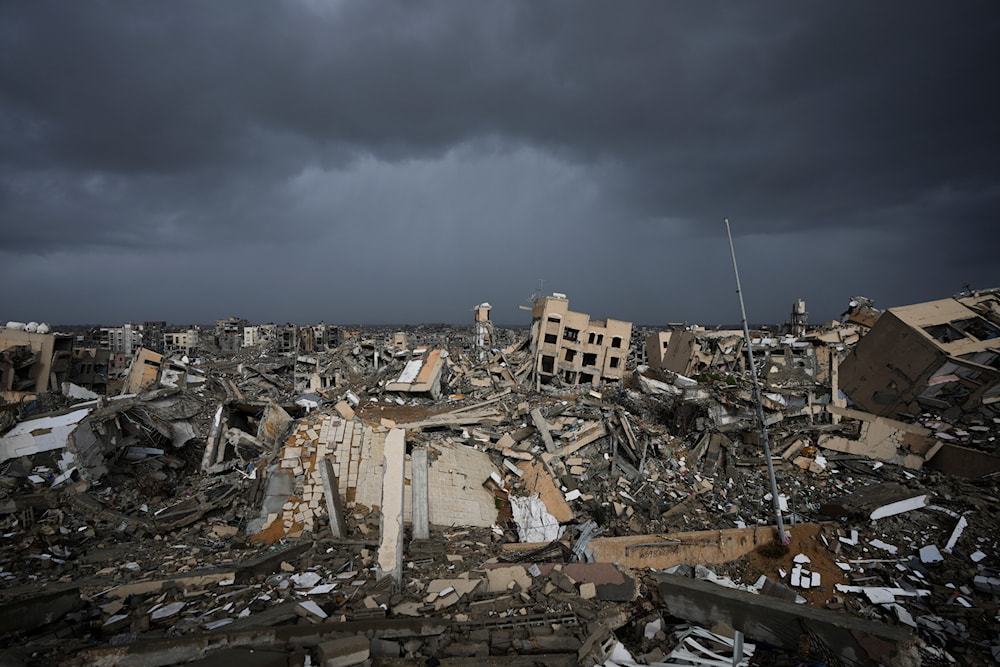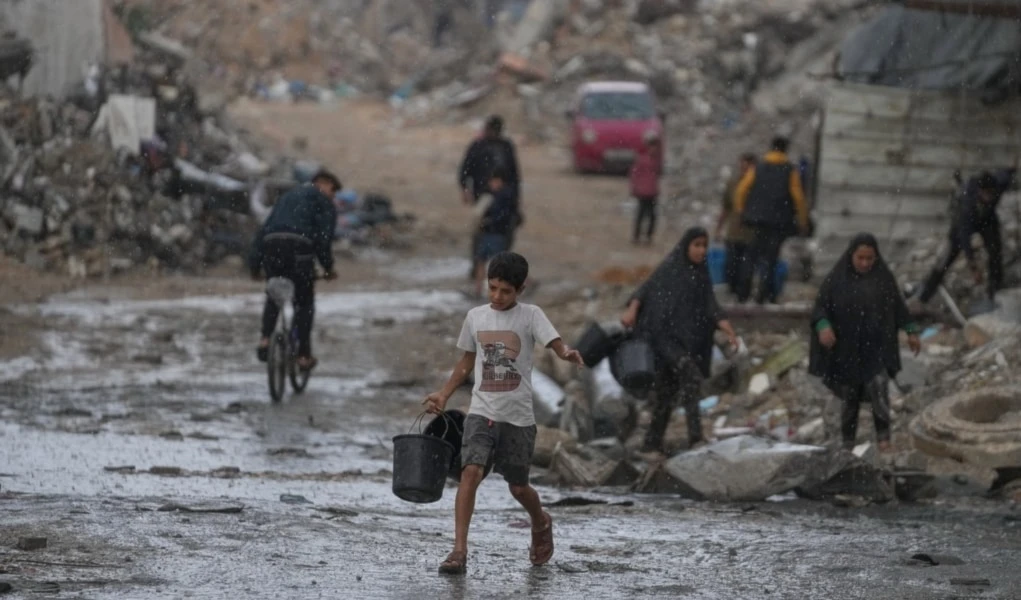Casualties from Israeli genocide near 160,000 in Gaza
The Palestinian Ministry of Health reports new martyrs, bringing the total to 48,181 martyrs and 111,638 injuries.
-

A view of the destruction caused by the Israeli air and ground offensive in Jabalia, Gaza Strip, on February 6, 2025. (AP)
The Palestinian Ministry of Health in Gaza announced that over the past 48 hours, 26 martyrs—22 recovered from beneath the rubble and four newly martyred—along with five injured individuals, were brought to the Strip's hospitals.
The Ministry further reported the addition of 572 martyrs to the cumulative toll, after their data was verified and approved by the judicial committee overseeing reports of missing persons.
As a result, the death toll from the ongoing Israeli aggression since October 7, 2023, has surged to 48,181 martyrs and 111,638 injuries.
The Ministry underscored that countless victims remain buried beneath the rubble or stranded on the streets, as Israeli attacks and the blockade on essential recovery equipment continue to impede the efforts of ambulance and Civil Defense teams.
This deliberate obstruction, the Ministry stressed, represents a clear and flagrant violation of the ceasefire agreement, further exacerbating the humanitarian crisis.
'Israel' hindering humanitarian operations
Hamas accused the Israeli occupation of delaying relief and reconstruction efforts, which were stipulated in the ceasefire agreement.
In a statement released on February 3, the movement said that "Israel" had failed to fully adhere to various relief measures and had not allowed any rebuilding efforts or the entry of essential medical supplies.
Hamas further noted that the amount of fuel entering Gaza was significantly less than agreed, adding that almost no aid had reached northern Gaza and that none of the designated heavy machinery had been allowed in.
The statement warned that the Israeli occupation's refusal to permit the entry of excavation equipment prevents the recovery of martyrs’ bodies and hinders the retrieval of remains needed for potential exchanges at the end of this phase.
Moreover, the Director-General of the Ministry of Health in Gaza, Munir al-Barsh, stated on February 3 that essential supplies needed to operate hospitals—such as fuel and oxygen stations—have not reached northern Gaza.
Al-Barsh added that around 40% of kidney failure patients have died due to a lack of dialysis machines, emphasizing the urgent need for field hospitals as many medical centers in the north have ceased operations.

 2 Min Read
2 Min Read









